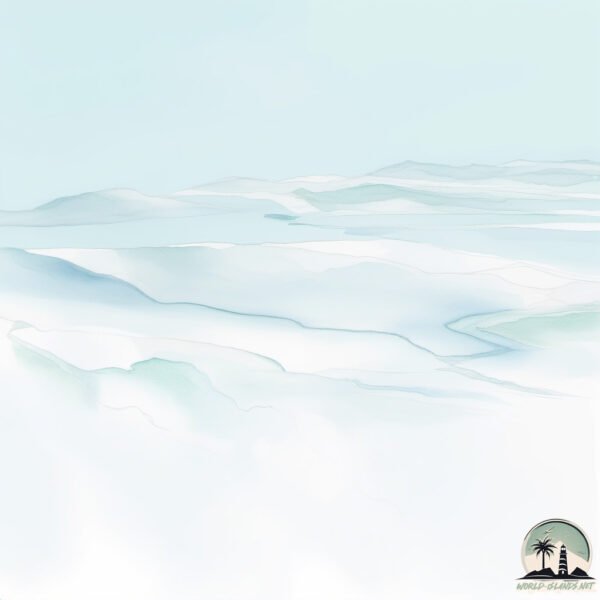Welcome to Nares Land , a Polar island in the Lincoln Sea, part of the majestic Arctic Ocean. This guide offers a comprehensive overview of what makes Nares Land unique – from its geography and climate to its population, infrastructure, and beyond. Dive into the details:
Geography and size of Nares Land
Size: 1783 km²Coastline: 219 kmOcean: Arctic OceanSea: Lincoln SeaContinent: North America
Nares Land is a Very Large Island spanning 1783 km² with a coastline of 219 km.
Archipel: –
Tectonic Plate: North America – Covers North America and parts of the Atlantic and Arctic Oceans, characterized by diverse geological features and varying levels of seismic activity.
The geographic heart of the island is pinpointed at these coordinates:
Climate and weather of Nares Land
Climate Zone: PolarClimate Details: TundraTemperature: Cold
Climate Characteristics: The tundra climate features long, extremely cold winters and short, cool summers. Vegetation is limited to mosses, lichens, and small shrubs due to the low temperatures and short growing seasons. Biodiversity is low, but some specialized species thrive.
Topography and nature of Nares Land
Timezone: UTC-03:00Timezone places: America/Sao_PauloMax. Elevation: 1182 m Mean Elevation: 496 mVegetation: Sparse VegetationTree Coverage: 0%
The mean elevation is 496 m. The highest elevation on the island reaches approximately 1182 meters above sea level. The island is characterized by Mountains: High, steeply elevated landforms. Characterized by both a high maximum elevation (over 500 meters) and a high mean elevation, creating rugged, mountainous terrains on islands.
Dominating Vegetation: Sparse Vegetation
Vegetation: 5 vegetation zones – Highly Diverse Island
Infrastructure and Travelling to Nares Land
Does the island have a public airport? no .
Does the island have a major port? no .
The mean population of Nares Land is 0 per km². Nares Land is Uninhabited. The island belongs to Denmark .
The name of the island resonates across different cultures and languages. Here is how it is known around the world: Arabic: جزيرة غرينلاند; German: Grönland; Spanish: Groenlandia; French: Groenland; Portuguese: Groenlândia; Russian: Гренландия; Chinese: 格陵兰岛
Continuing your journey, John Murray is the next notable island, situated merely km away.
Nares Strait, border between Ellesmere Island (Canada) and Greenland (Denmark), 2012
Time-lapse imagery from July 9 to Sept. 13 2012 shows an ice island calve from Petermann Glacier and pass through Nares Strait ...
Nares Strait, border between Ellesmere Island (Canada) and Greenland (Denmark), 2012
Time-lapse imagery from July 9 to Sept. 13 2012 shows an ice island ...
Time-lapse imagery from July 9 to Sept. 13 2012 shows an ice island calve from Petermann Glacier and pass through Nares Strait ...
WEIRD HISTORY FACTS!(HANS ISLAND AND DENMARK)#weird #history #shorts #facts
Hans Island (Inuktitut and Greenlandic: Tartupaluk, lit. 'kidney ...
Hans Island (Inuktitut and Greenlandic: Tartupaluk, lit. 'kidney shaped'; Inuktitut syllabics: ᑕᕐᑐᐸᓗᒃ; Danish: Hans Ø; French: ...
Canada and Denmark SHARES a land border...
#shorts
When talking about countries that shares a land border with Canada ...
When talking about countries that shares a land border with Canada many people immediately think of United States, a country ...
Denmark is classified as Developed region: nonG7: Developed economies outside of the Group of Seven, characterized by high income and advanced economic structures. The level of income is High income: OECD.
News – Latest Updates and Headlines from Nares Land
Stay informed with the most recent news and important headlines from Nares Land. Here’s a roundup of the latest developments.
Loading...
Social Media Posts about Nares Land
Loading...
Please note: The data used here has been primarily extracted from satellite readings. Deviations from exact values may occur, particularly regarding the height of elevations and population density. Land area and coastline measurements refer to average values at mean high tide.

